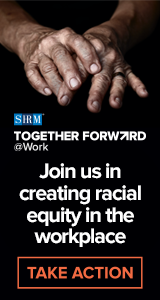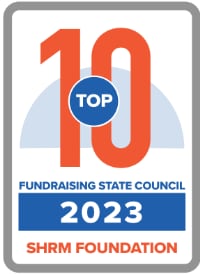This blog is contributed by Mike Tooley, partner at Ice Miller.
The question “am I my brother’s keeper?” is the classic example in western tradition of someone attempting to deflect personal responsibility for bad behavior. Applying that ancient question to the challenges of today: what obligations do observers of bad workplace behavior have to take action instead of remaining mere bystanders?
Standing By vs. Getting Involved
This question has been on the forefront of my mind as a result of a couple of high-profile harassment investigations conducted in the past few years. The first investigation preceded the #MeToo age and arose out of the unlikely setting of the National Football League when a Miami Dolphins football player named Jonathan Martin accused a pack of other players of tormenting him through bullying and hazing in the locker room. Although punishments were ultimately meted out against the primary offenders for what the NFL deemed a “pattern of harassment,” the sad reality is that Martin was forced to seek psychiatric treatment following the bullying and never played for the Dolphins again after reporting it.
While the culpability of the bullies themselves cannot be minimized, the lingering question left unresolved by the report from the NFL’s investigation was, where were the coaches and other players when this abusive behavior was going on? Why did the leaders of the Dolphins’ organization, including Martin’s teammates, stand by rather than do something to stop the hostile treatment of Martin before it got to such extremes?
These questions resurfaced for me recently, following a well-publicized report issued closer to home concerning an investigation into a powerful governmental official alleged to have engaged in a series of unwanted sexual comments and advances toward a number of women over the course of an alcohol-fueled evening. The investigative report released to the public summarized numerous witness accounts of the events, including detailed descriptions of the official’s behavior and also of the involvement—or lack of involvement—of bystanders in trying to stop the offending behavior before it went too far.
The investigative report concluded with this troubling statement: “Several men at the bar [where the harassing behavior allegedly occurred] observed unwanted touching and offered to get involved, but the women present actually came to the aid of each other . . .”
Read that again, slowly. The men at the bar “observed touching and offered to get involved.” The women present, by contrast, “actually came to the aid of each other.” Why the difference?
Interrupting Bad Behavior
As a husband, father, and leader in my own organization, my first reaction to this description of the male observers simply standing by while the women took action was one of surprise and, if truth be told, feeling judgmental regarding their passivity. Recognizing the limits of my objectivity, however, I decided to interview a number of professional women about their reactions, ranging from women in the early stages of their careers to those at the upper echelon of their organizations. Here’s what they told me:
- They were not the least bit surprised that the women who observed the misconduct “actually came to the aid of each other.” As one experienced professional explained, women have been placed in such situations too many times to count over the course of their lives and have learned the necessity of having each other’s backs as a result.
- Because these experiences are so common to women, they told me they are more attuned to the signs of when intervention might be necessary on behalf of someone else and have learned strategies for defusing the situation without escalating it, which is exactly what the women discussed in the report did. Every situation is different, they emphasized, which requires bystanders to utilize their emotional intelligence (and quickly!) to determine whether and how to intervene when they observe behavior they believe to be inappropriate.
- While acknowledging that the women in the report were more proactive in providing assistance, the women I spoke with were less critical of the men than I was. The fact that the men in the report “offered to get involved” was appreciated by them, as it showed they were not condoning or joining in the harassing behavior. However, they made it clear that in some instances, it is better for a bystander to interrupt the offending behavior immediately—regardless of the bystander’s gender—and ask permission later.
- The key word they used was “interruption,” not “protection.” Their view was that the bystander’s actions should be proportionate in the moment and not escalate the situation—e.g., stepping in between the harasser and the victim or asking the victim to accompany them to some other location as opposed to provoking a physical confrontation. The time to escalate the situation by reporting it through the official channels can come later, after the heat of the moment passes, they told me.
- They emphasized that interruption of harassing and unwelcome behavior in the workplace by male, as well as female bystanders, is not only welcome but critical creating a workplace environment that is truly free from harassment and is inclusive and safe. When male bystanders call out or interrupt objectionable behavior, they told me, it tells the women in the workplace the men do not agree such conduct is acceptable. It also sends the equally important message that their female colleagues are “part of their tribe” and singling them out for unfair or discriminatory treatment will not be tolerated.
Workplace Courage
If the answer to the question “am I my brother [and sister’s] keeper?” is, thus, “yes” (or perhaps more accurately, “sometimes”), the question then becomes “how”—as in “how can I do this effectively without getting myself in trouble and in a way likely to lead to a successful outcome?”
From a legal perspective, the federal law prohibiting sexual harassment and other forms of workplace discrimination, Title VII of the Civil Rights Act of 1964, contains what’s known as the “opposition clause.” This clause outlaws retaliation against individuals who complain about or otherwise resist behavior they reasonably believe to be in violation of Title VII. The Equal Employment Opportunity Commission defines “opposition” broadly to include: complaining or threatening to complain about alleged discrimination against oneself or others, providing information in an employer’s internal investigation of an equal employment opportunity matter, and “resisting sexual advances or intervening to protect others,” even if that behavior is not yet so severe and persuasive to constitute unlawful harassment. (EEOC’s Enforcement Guidance on Retaliation and Related Issues (2016)).
The fact that interrupting potentially unlawful workplace behavior is legally protected is only half the battle, however. The question of how you can you do it in a way that’s most likely to be effective was the topic of an article published in the November-December 2018 edition of the Harvard Business Review, titled “Cultivating Workplace Courage: The Right Way to Speak Truth to Power.”
The author, Professor James R. Detert, decided to investigate instances of what he called “workplace courage” after spending over a decade researching why people so often failed to speak up when faced with policies or conduct in the workplace with which they disagreed. What he found surprised him.
Detert’s investigation found that most incidents of workplace courage didn’t come from classic outsiders or whistleblowers who took on the system. (Think Norma Rae or Erin Brockovich or, for those seeking more current examples, Edward Snowden or Rose McGowan). Instead, he concluded that most people successful in challenging wrong-headed behavior and policies and in creating positive change were “competently courageous” insiders who took action because they believed it was the right thing to do—“right” for the individuals involved and for the organization.
Detert concluded that the successes of these individuals were due to a set of attitudes and behaviors that created the right conditions for action, such as:
- They laid the groundwork for their acts of courage by creating a strong internal reputation for their character and competence so that when they did challenge a policy, system, or action, their challenge carried greater weight.
- They chose their battles carefully to avoid being seen as a “broken record,” discerning whether a particular situation was worth challenging in light of their values, the timing, and their broader objectives for the organization.
- When they did determine it was appropriate to act out, they maximized the odds of success by explaining how the position they advocated aligned with the organization’s values and kept their cool in the face of sometimes-emotional opposition.
- Moreover, they followed up on their acts of workplace courage by working to preserve their personal relationships with leaders who might feel challenged by their actions and by continuing to pursue their agenda after the first big moment of action.
Most significantly, Detert concluded that these behaviors were not dependent on intrinsic characteristics of the individuals who displayed them. Instead, they can be learned by, and taught to, others in that organization or other organizations.
What Culture Will You Build?
If Detert’s conclusions are correct, then workplace courage is a competency that can be cultivated, acknowledged, and valued in an organization. Bringing this full circle, if the Miami Dolphins had a culture in which players were expected to interrupt acts of bullying rather than look the other way, the life and career of Jonathan Martin might have turned out very differently, as would the lives of countless #MeToo victims if their co-workers had shown more workplace courage on their behalf instead of being bystanders.
The ultimate question for you, and for me, is what culture will we help build in our organizations through our own example? We already have seen far too many instances of what happens in an organization of Bystanders. Perhaps it’s time to build a culture of Interrupters instead.
If you have further questions, please contact Mike Tooley or another member of our Labor, Employment and Immigration Group.
This publication is intended for general information purposes only and does not and is not intended to constitute legal advice. The reader should consult with legal counsel to determine how laws or decisions discussed herein apply to the reader’s specific circumstances.






